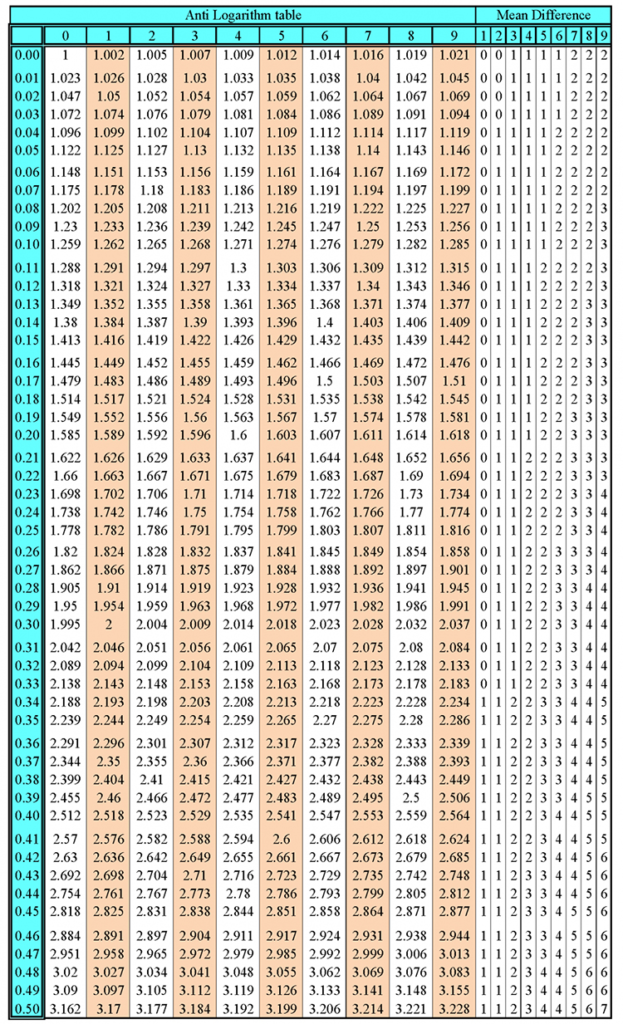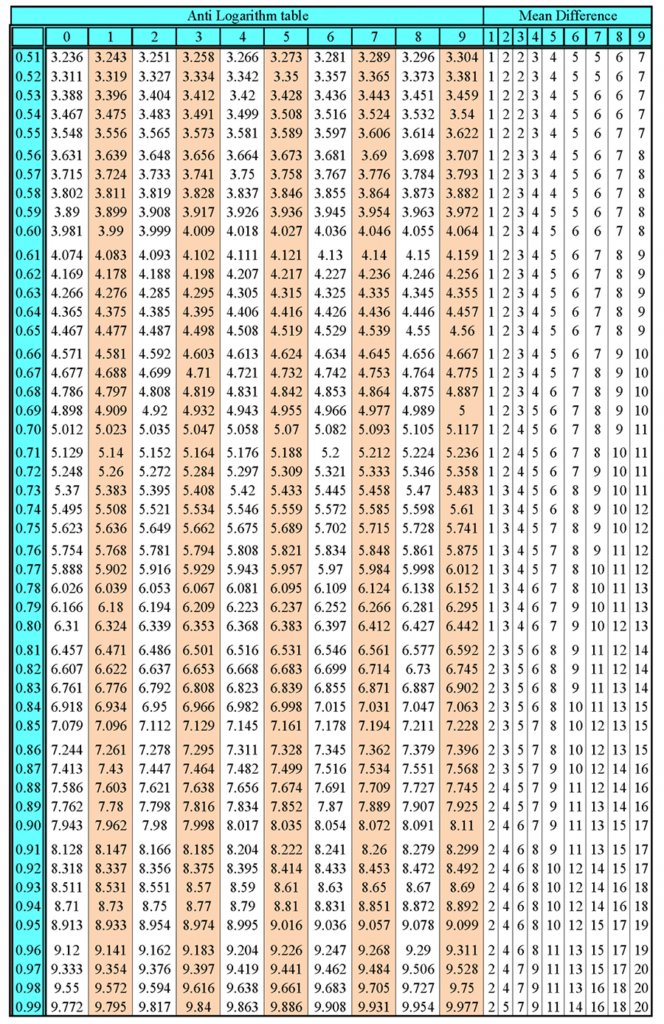Logarithms and antilogarithms are mathematical concepts that deal with powers and exponentials. Here’s a brief overview:
Logarithm:
A logarithm is the inverse operation of exponentiation. If ![]() , then the logarithm of
, then the logarithm of ![]() with base
with base ![]() is
is ![]() . It’s represented as:
. It’s represented as:
![]()
– **Base**: ![]()
– **Exponent**: ![]()
– **Result**: ![]()
For example, ![]() , so the logarithm base 2 of 8 is 3. Written as:
, so the logarithm base 2 of 8 is 3. Written as:
![]()
Common bases:
1. Base 10 (common logarithm): Represented as ![]() . If you see “log” without a specified base, it typically means base 10.
. If you see “log” without a specified base, it typically means base 10.
2. Base ![]() (natural logarithm): Represented as
(natural logarithm): Represented as ![]() . Here,
. Here, ![]() is approximately equal to 2.71828 and is the base of the natural logarithm.
is approximately equal to 2.71828 and is the base of the natural logarithm.
Antilogarithm:
Antilogarithm (or inverse logarithm) reverses the logarithm operation. Given a logarithm, the antilogarithm gives the number of which it is the logarithm. In other words, if you have the value of the logarithm, the antilogarithm will give you the original number.
For a given base ![]() :
:
![]()
For example, if you have:
![]()
The antilogarithm base 2 of 3 is 8. This is essentially the same as calculating ![]() .
.
How to compute:
1. For common logarithms (base 10):
![]()
2. For natural logarithms (base ![]() ):
):
![]()
Before calculators became commonplace, logarithm and antilogarithm tables were widely used for multiplication, division, and other calculations, especially in sciences and engineering.
Nowadays, with the advent of modern calculators and computational software, the need for tables has diminished, but understanding the concepts behind logarithms and antilogarithms is still crucial in many fields.
Log and antilog tables

Antilog table


Source: https://mammothmemory.net/maths/logarithms/logarithms/how-do-you-work-out-logarithm-tables.html
Concept Videos